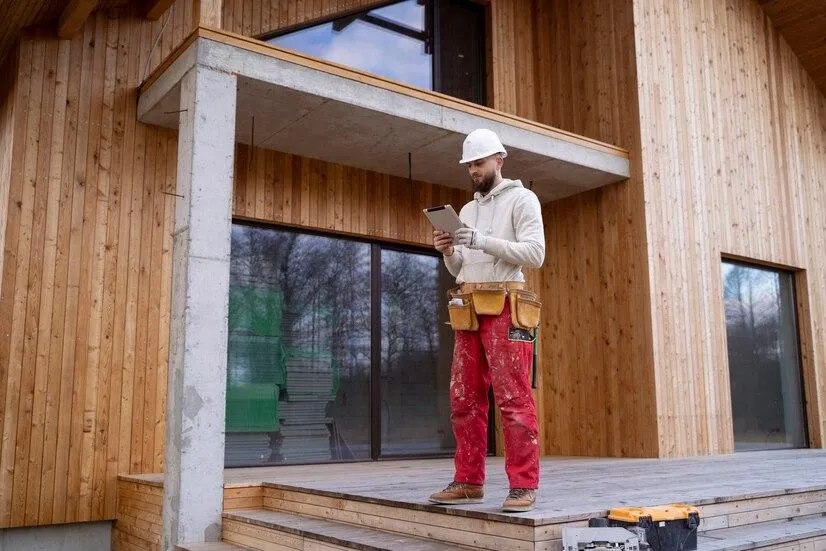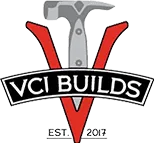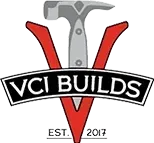Blogs

The Importance of Regular California Deck Inspections
Decks are a cherished feature of many California homes, offering a perfect spot for relaxation and outdoor gatherings. However, the unique weather conditions in the state can take a toll on their integrity over time. Regular California deck inspections are essential to ensure safety and prevent costly repairs down the line. By identifying potential issues early, homeowners can maintain their deck’s structural soundness and enhance its longevity, ultimately preserving both the beauty and value of their property.
The primary purpose of these inspections is to identify any potential issues that could compromise the deck’s stability or pose safety risks to users. This includes examining the overall structure, assessing the condition of materials, and checking safety features such as railings and stairs.
Why Regular Inspections Are Essential
Regular inspections of your deck are vital for several reasons, primarily focusing on safety, cost efficiency, and compliance with local regulations. These inspections not only help identify potential hazards but also contribute to the longevity of your outdoor space. Here’s a closer look at why these evaluations are essential for every California homeowner.
Safety Concerns
The risks associated with deck failure are significant. A deteriorating deck can lead to collapses, causing serious injuries or even fatalities. According to recent statistics, thousands of accidents related to deck failures occur each year, underscoring the need for vigilance in maintenance and inspection.
Long-Term Cost Savings
Investing in regular inspections can save homeowners substantial amounts in the long run. Preventative maintenance often costs far less than extensive repairs resulting from neglected issues. Additionally, a well-maintained deck contributes positively to property value, while a deteriorating one can deter potential buyers and decrease market worth.
Compliance with Local Regulations
California has specific building codes designed to ensure the safety and stability of structures, including decks. Regular inspections help ensure compliance with these regulations, minimizing the risk of legal issues and enhancing safety standards. Adhering to these codes not only protects your investment but also ensures the safety of everyone who uses your deck.
What Happens During a Deck Inspection

During a California deck inspection, several critical aspects are evaluated to ensure the deck's safety and longevity. This thorough process involves examining the structural components, assessing the condition of materials, and evaluating safety features. Each of these elements plays a vital role in identifying potential issues and maintaining a secure outdoor space for homeowners and their guests. Here's a closer look at what happens during a deck inspection:
Structural Assessment
A structural assessment is a critical component of any deck inspection, focusing on the key elements that support the entire structure. This evaluation ensures that the deck's foundational components, such as beams, joists, and supports, are in good condition and capable of withstanding regular use and environmental stresses.
Examination of Beams, Joists, and Supports: Inspectors carefully examine the foundational components of the deck, including beams and joists, for any signs of stress or damage.
Identifying Signs of Wear and Tear: They look for visible signs such as cracks, sagging, or displacement that may indicate structural weakness.
Material Condition Check
A material condition check is a vital component of deck inspections, focusing on the health and integrity of the materials used in the construction of the deck. This assessment helps identify deterioration, ensuring that the deck remains safe and functional for use. By evaluating the condition of wood, composite materials, and other elements, inspectors can detect potential issues early and recommend necessary repairs or replacements, ultimately prolonging the deck's lifespan and maintaining its appearance.
Evaluating Wood, Composite, or Other Materials: The inspector assesses the type of materials used in the deck, determining if they are appropriate for the local climate and wear.
Checking for Rot, Splintering, or Corrosion: Special attention is given to identifying any deterioration, such as wood rot, splintered boards, or corroded metal fixtures that could compromise the deck's integrity.
Safety Feature Evaluation
Evaluating safety features during a deck inspection is a critical step in ensuring a secure outdoor environment. Properly functioning safety elements not only protect against accidents but also enhance the overall usability of the deck. Inspectors focus on various components, such as railings, stairs, and drainage systems, to ensure they meet safety standards and function effectively.
Inspecting Railings, Stairs, and Other Safety Features: Safety features are scrutinized to ensure they meet current safety standards, including the stability of railings and the condition of stairs.
Ensuring Proper Drainage and Ventilation: The inspector verifies that the deck has adequate drainage and ventilation, preventing water accumulation that can lead to damage and safety hazards.
Frequency of Inspections
Determining the frequency of deck inspections is crucial for maintaining the safety and longevity of your outdoor space. Regular evaluations help identify potential issues before they escalate into costly repairs. Knowing when to schedule inspections and recognizing the signs that indicate a need for immediate attention can safeguard your deck’s integrity and enhance its lifespan. Here’s a breakdown of recommended inspection schedules and signs that suggest it’s time for a thorough evaluation:
Recommended Inspection Schedule
Establishing a recommended inspection schedule for your deck is vital for ensuring its safety and longevity. Regular inspections allow homeowners to proactively identify and address potential issues, preventing costly repairs and enhancing the overall functionality of the outdoor space. Whether you choose to conduct annual inspections or opt for more frequent checks based on specific conditions, understanding the best practices for scheduling will help maintain the integrity of your deck throughout the years. Here’s a closer look at the recommended inspection frequencies and the factors that may influence your decision.
Annual Inspections vs. Seasonal Checks: While annual inspections are typically recommended, homeowners may choose seasonal checks depending on their deck's usage and exposure to environmental factors.
Factors Influencing Inspection Frequency: The age of the deck, frequency of use, and local environmental conditions, such as humidity and exposure to the sun, can all impact how often inspections should be conducted.
Signs You Need an Inspection

Recognizing the signs that indicate your deck needs an inspection is vital for maintaining its safety and functionality. Even minor issues, if left unaddressed, can escalate into serious problems that compromise the integrity of your deck. By staying vigilant and attentive to changes in your deck’s condition, you can ensure timely inspections and protect your outdoor space. Here are some key indicators that it’s time to schedule an inspection:
Visible Damage or Wear: Homeowners should keep an eye out for any visible signs of damage, such as cracked or splintered boards, loose railings, or sagging areas that may require immediate attention.
After Severe Weather Events: Severe weather events, including storms or earthquakes, can significantly affect a deck's stability. It’s essential to conduct an inspection following such events to assess any potential damage.
Choosing a Professional Inspector
Selecting the right professional for a deck inspection is crucial to ensuring your deck’s safety and longevity. A qualified inspector can provide a comprehensive assessment, identifying potential issues that could lead to costly repairs or safety hazards. Here are key considerations for choosing a professional inspector for your California deck:
Qualifications and Experience
When it comes to ensuring the safety and integrity of your deck, the qualifications and experience of the inspector are paramount. A knowledgeable and certified professional brings valuable expertise to the table, allowing them to identify potential issues and recommend appropriate solutions. Understanding what to look for in a deck inspector can help you make an informed choice, ultimately safeguarding your investment and ensuring a secure outdoor space for your home.
What to Look for in a Deck Inspector: Look for inspectors with relevant certifications and a solid background in deck construction and maintenance.
Importance of Hiring Certified Professionals: Certified inspectors have the training and knowledge to conduct thorough assessments, ensuring compliance with local building codes and safety standards.
Questions to Ask Potential Inspectors
When hiring a professional deck inspector, asking the right questions is essential to ensure you find someone qualified and trustworthy. A thorough discussion can help you gauge their expertise, experience, and approach to inspections. Here are key questions to consider when evaluating potential inspectors for your California deck.
Experience with California Decks: Inquire about their experience specifically with California decks, as regional climate and regulations can affect the inspection process.
Types of Inspections Offered and Associated Costs: Ask about the various types of inspections they provide and request a breakdown of costs to make an informed decision.
Regular California deck inspections are vital for maintaining the safety, longevity, and value of your outdoor space. By identifying potential issues early, you can avoid costly repairs and ensure your deck remains a safe haven for family and friends. Don’t wait until problems arise; schedule a professional inspection today to protect your investment.
At VCI Builds, we specialize in comprehensive deck inspections tailored to the unique needs of California homeowners. Located in Hammond, Irvine, CA, our certified experts are here to help. Contact us at (949) 978-0010 to book your inspection and enjoy peace of mind with a safe and well-maintained deck.





